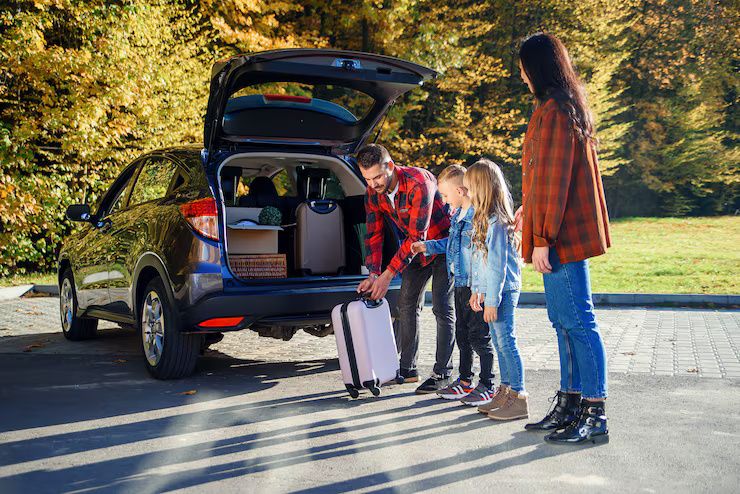As tourism continues to grow worldwide, so does its impact on the environment. From carbon emissions to plastic waste and strain on local resources, traditional travel habits can harm the planet. Eco-friendly travel, also known as sustainable or responsible travel, is about making choices that reduce your environmental footprint and support local communities.
This guide outlines simple and practical ways to travel more sustainably—without sacrificing the joy of the journey.
The importance of sustainable travel today
Modern travelers are more environmentally conscious than ever. Climate change, biodiversity loss, and pollution have raised awareness of the negative effects of travel. For example:
-
Aviation accounts for 2.5–3% of global carbon emissions
-
Overtourism affects fragile ecosystems like coral reefs and historic cities
-
Single-use plastic waste increases dramatically during peak travel seasons
Eco-conscious travel helps:
-
Minimize your carbon footprint
-
Protect natural habitats and wildlife
-
Support local cultures and economies
-
Preserve destinations for future generations
Travelers, tour operators, and governments all play a role in shifting toward a more sustainable model.

Recent updates and trends in eco-tourism (2024–2025)
Eco-friendly travel has gained momentum, with several recent developments:
| Trend or Update | Description | Year |
|---|---|---|
| Growth of “slow travel” | More people are choosing fewer, longer trips to reduce flight emissions | 2024–2025 |
| Carbon offset programs by airlines | Airlines like Lufthansa and KLM offer carbon offset options | 2024 |
| Sustainable hotel certifications | Rise in eco-certifications like Green Key and EarthCheck | 2024 |
| Ban on single-use plastics | Countries like Thailand, Kenya, and the EU have imposed bans | 2024 |
| Electric public transport expansion | Cities like Amsterdam and Lisbon are switching to green transit | Ongoing |
Laws, regulations, and government initiatives
Governments worldwide have introduced policies to encourage eco-conscious tourism:
-
EU Green Deal encourages greener travel across Europe, including rail incentives
-
Plastic bans in countries such as India, Canada, and Rwanda apply to travelers too
-
Marine park access limits (e.g., Philippines, Australia) protect coral reefs
-
National park visitor caps in countries like Bhutan and Costa Rica help preserve biodiversity
-
Sustainable tourism taxes in places like Venice, Bali, and Barcelona fund environmental efforts
Travelers should stay informed about destination-specific laws to avoid fines and support conservation goals.
Practical tools and resources for eco-friendly travel
You don’t have to overhaul your travel style—small changes make a big difference. Here are some useful apps and tools to support green travel:
Eco-friendly transport and route planning
-
Rome2Rio – Find greener travel options like trains or buses
-
Ecosia Travel – Book eco-certified hotels and transport using a search engine that plants trees
-
BlaBlaCar – Shared car rides to reduce emissions
Accommodation and stays
| Platform | What it offers |
|---|---|
| Bookdifferent.com | Hotels rated for sustainability |
| Green Pearls | Eco-certified luxury hotels and lodges |
| Airbnb Green Stays | Filters for eco-conscious properties |
Packing and zero-waste tools
-
Refill My Bottle – Locate refill stations for your reusable bottle
-
To Good To Go – Reduce food waste by purchasing unsold meals from restaurants
-
Etsy/EcoRoots – Reusable travel products (bamboo cutlery, shampoo bars)
Carbon tracking and offsetting
-
MyClimate – Calculate and offset your travel emissions
-
ClimateHero – Personal carbon footprint calculator with travel options
Simple eco-friendly travel tips everyone can follow
Even small actions matter when it comes to sustainable travel. Here are everyday tips:
Before your trip
-
Choose direct flights to reduce emissions
-
Pack light – less weight = less fuel usage
-
Bring reusable items: water bottle, utensils, tote bag, containers
During your trip
-
Use public transport, bike, or walk instead of taxis
-
Avoid animal attractions (elephant rides, tiger selfies, etc.)
-
Stay in locally owned or eco-certified accommodations
-
Turn off lights and air conditioning when leaving the hotel
Eating and shopping
-
Eat local and seasonal food
-
Skip chain restaurants—support community-run cafes
-
Avoid buying souvenirs made from endangered animals or coral
-
Say no to plastic straws and cutlery
Frequently asked questions
1. What is carbon offsetting, and how does it work?
Carbon offsetting allows you to compensate for your travel emissions by funding environmental projects like reforestation or renewable energy. You can calculate your emissions using tools like MyClimate and donate accordingly.
2. Are eco-friendly hotels more expensive?
Not necessarily. Many budget hotels are adopting green practices. Platforms like Bookdifferent.com let you filter affordable eco-certified stays. It’s about mindful choices, not just cost.
3. Can I still fly and be an eco-conscious traveler?
Yes, if you fly responsibly. Opt for direct flights, fly less often but stay longer, and offset your carbon. Consider trains or buses for short distances whenever possible.
4. What are some eco-friendly items I should pack?
-
Reusable water bottle
-
Travel-sized toiletries in refillable containers
-
Bamboo toothbrush
-
Tote bag and food containers
-
Cloth napkin or handkerchief
5. Is taking a cruise environmentally friendly?
Most cruises have a large carbon and waste footprint. If you choose to cruise, look for lines investing in green technology, waste management, and certified practices.
Final thoughts
Eco-friendly travel is not about being perfect—it’s about being more aware, informed, and responsible. Even the smallest choices, like refusing a plastic bag or taking the train instead of a plane, can add up over time.
By adopting sustainable habits, supporting local communities, and staying informed about global travel trends and regulations, every traveler can help protect the planet—one trip at a time.
